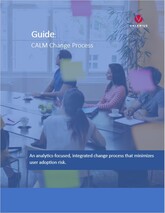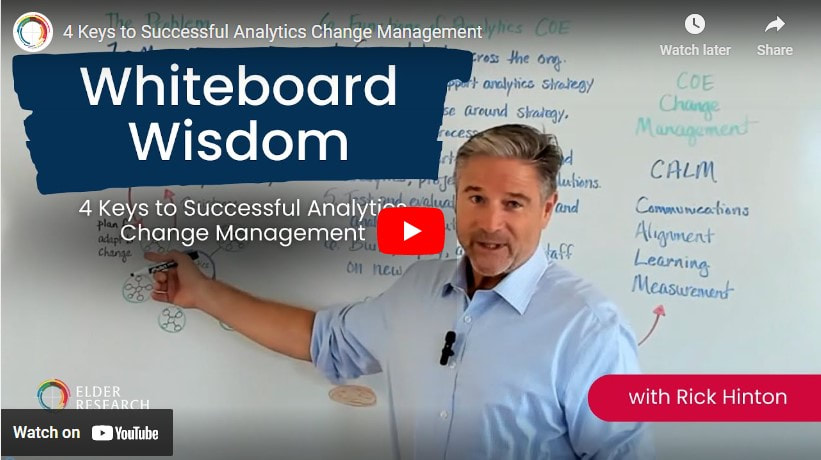A change method designed specifically for analytics adoption. Check out the CALM Change Management Guide to find out how to easily integrate change management capabilities into your existing project management and analytics software development processes.
|
The Challenge: Preparing your organization for AI-Assisted Decision making
Organizational decisions, large or small, are supported by a process and set of tools managed by people engaged in knowledge work. With the launch of widely available AI tools, there is potential for significant leaps in knowledge worker productivity. However, organizations seeking to capitalize on this opportunity will face internal resistance. What's needed is a framework and a clear methodology for the transition to an AI-ready organization.
Preparing for ChangeThere are three foundational elements for transitioning to an AI-ready organization: 1. Focusing on decision process improvement, 2. Developing the right mindsets and skill sets, and 3. Using an adaptive change process that keeps stakeholders aligned and engaged.
Examining decision processes provides the context for what's next, allowing organizations to hone in on where the greatest impact will be. Developing mindsets and skill sets help prepare and align those building and using these new capabilities. Pulling it all together is an adaptive change process that, similar to agile software development, provides a set of methods and tools to ensure steady progress on the change objectives. |
Decision Processes Decision process improvement provides a roadmap for change, including identifying new behaviors, skills, and mindsets, and prioritizing use cases that guide how organizations can apply AI to daily decisions across the enterprise.
|
Mindsets & Skill SetsPreparing people for change means giving them the tools to succeed in the new AI-assisted way of working. Making the transition requires not only developing new technical skills but adopting the mindsets of creative, critical thinkers.
|
Adaptive ChangeGiven the increased complexity AI presents in the workplace, organizations need a more adaptive, agile change process to guide the transition. Becoming more adept at change will become a critical competency for leaders and staff.
|
4 Keys to Successful Analytics Change ManagementAnalytics Centers of Excellence (CoE) help grow data and analytics capabilities across the enterprise. But they often face resistance to adoption due to mindsets wedded to the status quo, tools perceived as too complex, and analytics talent spread too thin. The CALM (Communication, Alignment, Learning, Measurement) method for change can help organizations address this resistance and build an AI-ready organization.
|
Quality Thinking: Essential Skills for the 21st Century
|
Data-driven Change: Essential Mindsets
|
Decision Process Improvement (DPI): Better, Faster DecisionsSystematizing decision-making processes exposes areas for continuous improvement and helps you create a roadmap for transitioning to an AI-assisted future.
|
Working with Analytics Centers of Excellence
Many organizations have launched Analytics Centers of Excellence (CoEs) to mature and scale their data and analytics capabilities across the enterprise. Working with various departments and business units, they are on the front lines, evaluating and deploying advanced analytics, which is why they are ideally suited to help organizations accelerate the transformation to AI-assisted decision-making.
We designed our services to support Analytics CoEs in building a from/to roadmap, a framework for change, and the critical domain expertise to help successfully transition to this new AI-enabled world.
We designed our services to support Analytics CoEs in building a from/to roadmap, a framework for change, and the critical domain expertise to help successfully transition to this new AI-enabled world.
|
In this podcast episode of Mining Your Own Business, Evan Wimpey and Rick Hinton discuss:
|










